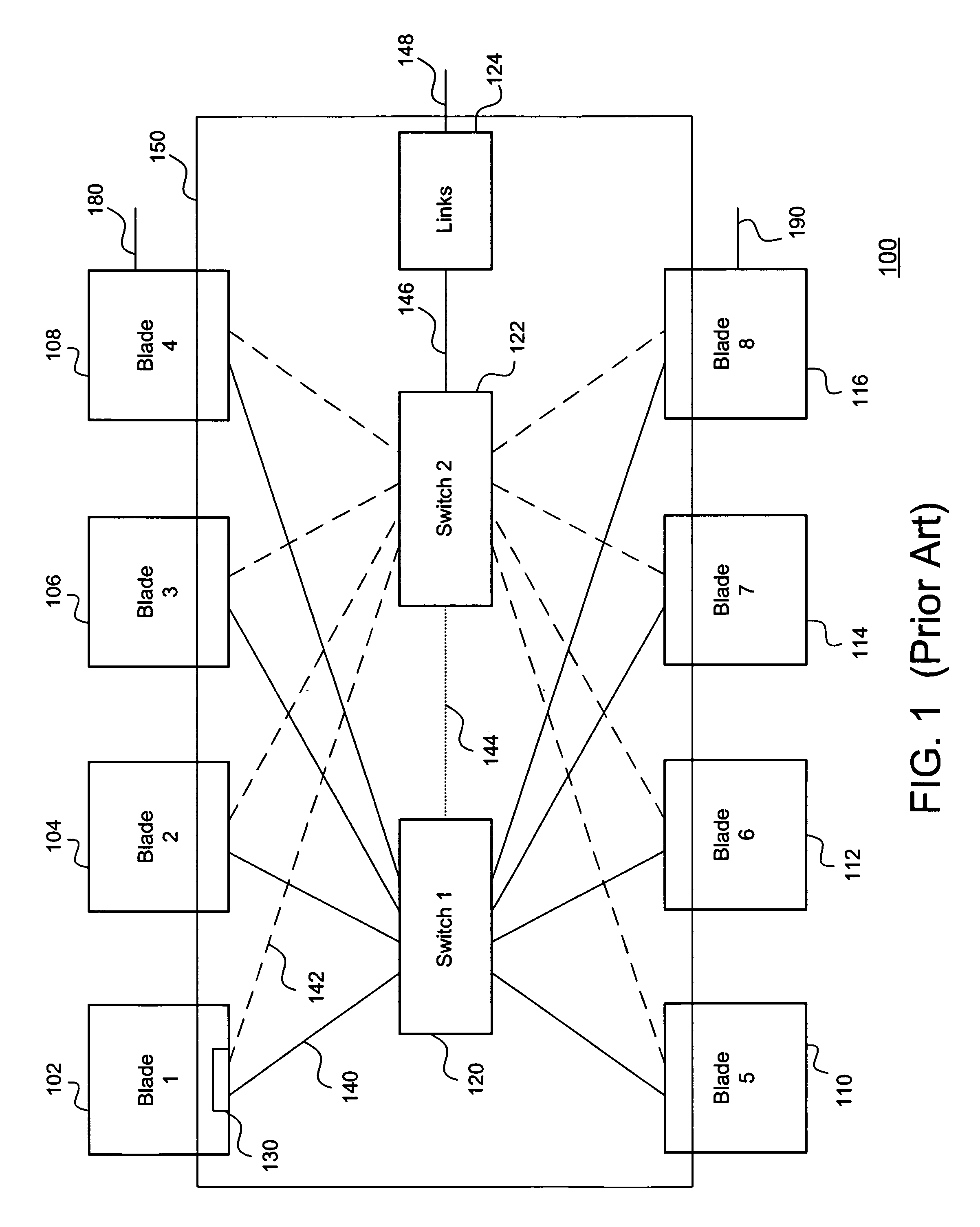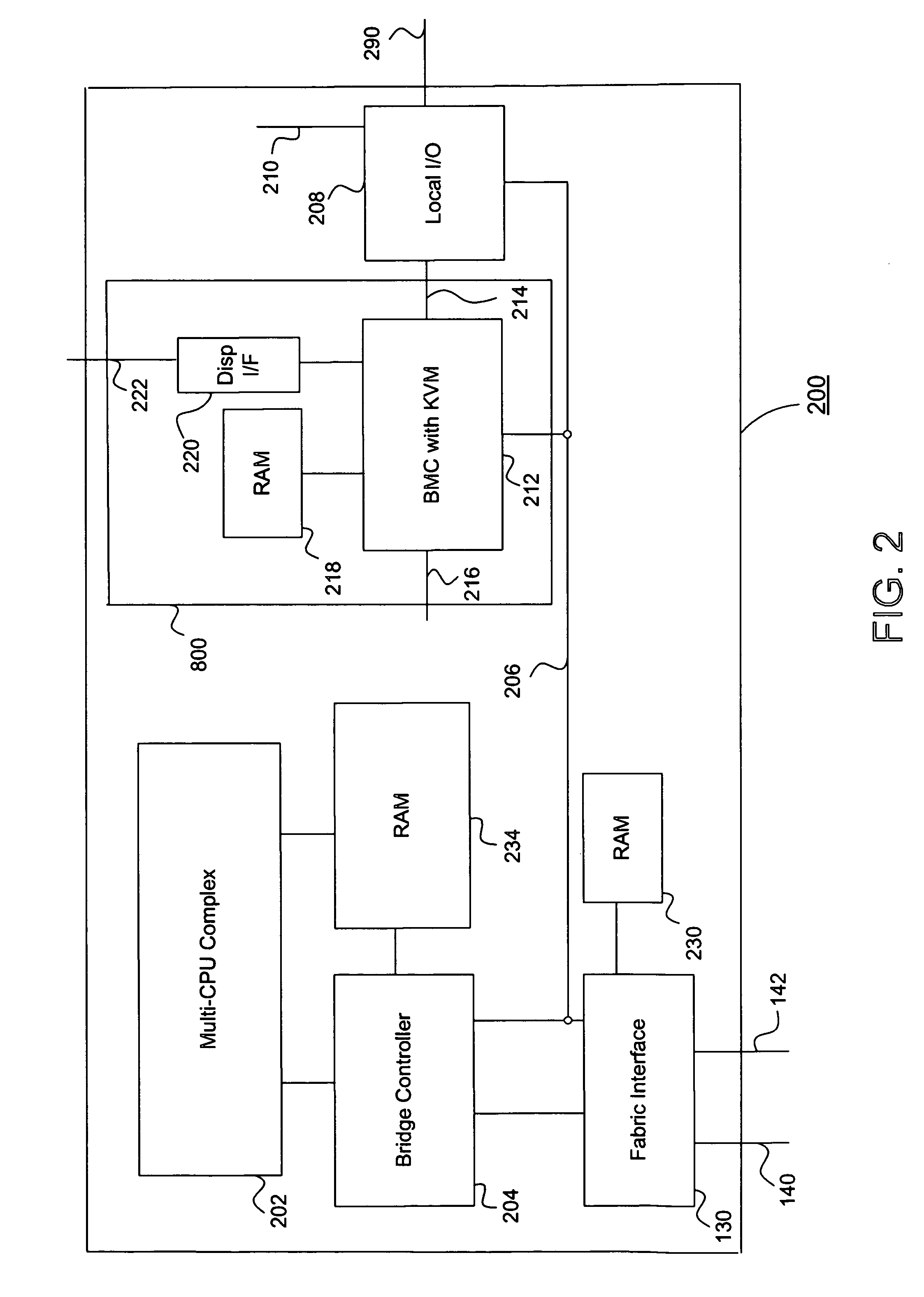Multi-user display proxy server
a proxy server and multi-user technology, applied in the field of multi-user host computer system, can solve the problems of reducing the economic sense of limiting the ability of limiting a single user to a single blade, so as to facilitate system interoperability and functionality, and achieve low latency , the effect of optimizing the frame ra
- Summary
- Abstract
- Description
- Claims
- Application Information
AI Technical Summary
Benefits of technology
Problems solved by technology
Method used
Image
Examples
first embodiment
[0094]For the selective tile updates, in a first embodiment, an S-Buffer is used where the MU-GPU 412 has a drawing engine that manages status bits for each tile and a selective update refresh engine that monitors the status bits as it manages the selective display updates for each tile. Like a Z-Buffer used in 3D graphics, the S-Buffer may be implemented as a separate memory plane of data. As with a Z-Buffer, the hardware drawing operations of an enhanced MU-GPU 412 can update the S-Buffer status bits without additional commands. The status bits are then used by selective update hardware to determine which of the tiles needs to be updated at the RT. Like the refresh cycle of a display controller, the selective update hardware may periodically traverse the S-Buffer and read the status bits. Based on the state of the status bits, the selective update hardware will either pass over a tile that does not need to be updated or it will read the tile for selective update, output the tile a...
second embodiment
[0115]For server based computing, “offload and enhance” maintains more of the processor blade 200's participation in client communication. The tracking software layer on processor blade 200 still redirects the DirectX video, graphics and data streams to the TSB 400 which completes the function of the DirectX call. Offloading the function makes the multi-CPU complex 202 available for other users of the multi-user system. The further processing can be completed by TSB 400 with an understanding of the display environment and the networking bandwidth which allows optimal processing.
[0116]The interpreter software on TSB 400 can also be used to manage the S-buffer with TSA-GPU 700 when a graphics command is performed both locally and forwarded to the RT for execution. The reason for the TSA-GPU 700 to execute the graphics command locally is so that a current copy of the frame buffer can be managed for future use. Since the graphics command is being executed at the RT, the tiles that chang...
PUM
 Login to View More
Login to View More Abstract
Description
Claims
Application Information
 Login to View More
Login to View More - R&D
- Intellectual Property
- Life Sciences
- Materials
- Tech Scout
- Unparalleled Data Quality
- Higher Quality Content
- 60% Fewer Hallucinations
Browse by: Latest US Patents, China's latest patents, Technical Efficacy Thesaurus, Application Domain, Technology Topic, Popular Technical Reports.
© 2025 PatSnap. All rights reserved.Legal|Privacy policy|Modern Slavery Act Transparency Statement|Sitemap|About US| Contact US: help@patsnap.com



